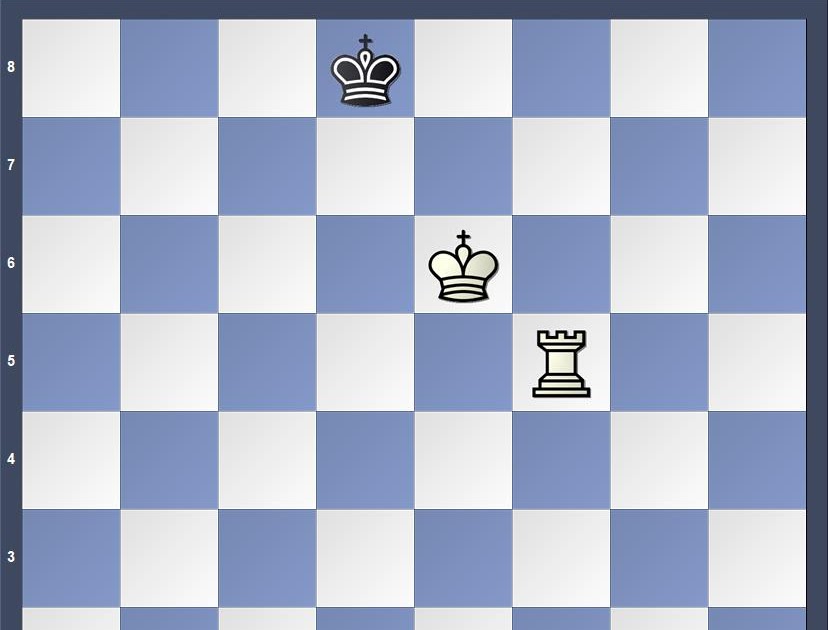
White to move
It is an ancient exercise that I first recall seeing and beginning to use with students while perusing Bruce Pandolfini, Pandolfini’s Endgame Course. With a group of students who are finishing the Pawn Award and beginning to work towards the Knight Award, I prefaced this position with two others from this week’s online play.
These positions are more difficult for beginners, so we spent some time on them.
Black to move
Facing a threat to my a-pawn that would upset the material equilibrium, I confined White’s king to the first rank with a checkmate threat.
White failed to find the most stubborn defense, played 44.Rd6? and resigned while I was contemplating how to remove the rook. After 44.Re8+ Kh7 45.Rf8, there is no checkmate threat. Nonetheless, Black is winning a pawn after 45…Rd3 46.Kf1 (46.Rf3 Rxf3 47.gxf3 Be5 is worse, and White’s a-pawn still falls) 46…Rxa3.
The second illustration shows the same cutting off idea with a piece on g3, although Black had many ways of winning.
Black to move
24…Qg3 (24…f4 is best) 25.Rf1 Re1 26.Qc4 Rxf1 27.Qxf1 Re1 and White resigned.
My intent was to show these two positions from recent online play, then have the students solve the mate in two from Pandolfini. Hopefully, the idea of restricting the opponent’s choices, rather than direct and often futile checks, will sink in.
Continuing the theme of cutting off, I found several instructive exercises in László Polgár, Chess Endgames. This study by Nikolai Antonovich Kopaev was the first.
White to move
White must find a sequence of “only” moves. Alternatives draw. This exercise and those that follow in Polgár’s massive book build endgame technique.
Discover more from reviewer4you.com
Subscribe to get the latest posts to your email.








